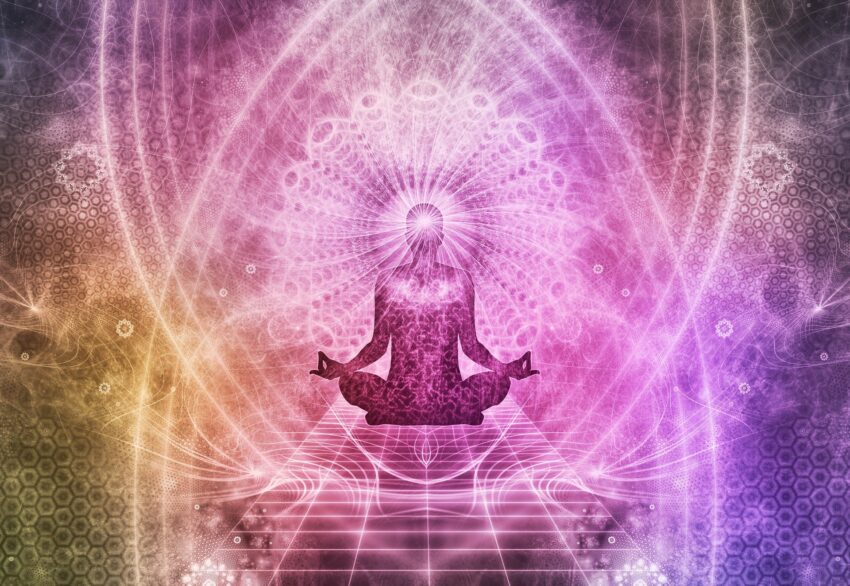UNDERSTANDING YOGA?: Yoga is more or less a spiritual discipline focusing on bringing harmony between mind and body. It is an art and science as well which focuses on healthy living. The word ‘Yoga’ is found to be originated from the Sanskrit MOOL,‘Yuj’, meaning ‘to join’ or ‘to yoke’ or ‘to unite’. The Yogic practices leads to the uniting of individual consciousness with that of the Universal Consciousness, finally helping in striking a perfect equilibrium between the body and mind. Modern science believes that everything in this universe is just a manifestation human body and mind system. The person who is capable of striking this harmony or balance between the two or causing oneness of existence is said to be in yogic life, and is termed as a yogi, and it is believed that such a person has attained a state of detachment referred to as Mukti, or Moksha. This is thus clear that the aim of Yoga is the Self-realization, and to overcome all kinds of sufferings leading to ‘the state of detachment’ called Moksha. Leading life of detachment in all walks of life, health and harmony is the main objectives of Yoga practices.
HISTORY AND DEVELOPMENT:
The very dawn of civilization brought in the practice of Yoga and it was an important part of life during those days of origin of civilisation. The yoga which is complete science, has its origin thousands of years back, long before the basic concepts of religions or belief took birth. In the Yogic World Lord Shiva is seen as the first yogi so we call him as Adiyogi, or he being the first Guru or Adi Guru.
It is believed that millions of years ago, Adiyogi or the Lord Shiva showered his great knowledge into the legendary Sapta-Rishis or “seven sages”. on the banks of the lake Kanti-Sarovar, situated in the Himalayas. Afterwards these seven sages spread thi yogic knowledge legacy to different parts of the world which included Asia, the Middle East, North Africa and Southern America. However, India was the country where the yogic system found its fullest expression and expansion across the sub-continent. Agastya Rishi, one of the Saptarishis traveled across the Indian subcontinent, and left markable expressions of Yoga culture around a core yogic way of life in this sub-continent.
Existence of Yoga was seen in the pre-Vedic period (2700 B.C.) and its historical evidences are also found in different places of sub-continent, It is also said that thereafter Rishi Patanjali also took over the responsibility of spreading the science of yogic practices among the masses during this period only. There are many sources, from which we get the information about Yoga practices existing in Indian Sub-Continent and these are mainly, the literature during this period, are available in Vedas, Upanishads, Smritis, teachings of Buddhism, Jainism, Panini, Epics, Puranas etc.
FUNDAMENTALS OF YOGIC KRIYAS:
Basically Yoga works on different levels of person’s body, mind, emotion and energy. Therefore the Yoga has been classified in four broad categopries 1) karma yoga, where we utilize the body; 2) bhakti yoga, where we utilize the emotions; 3) gyana yoga, where we utilize the mind and intelect; and 4) kriya yoga, where we utilize the energy.
In present days, Yoga Education has become the most important part of modern education system and is being imparted by many eminent Yoga Institutions, Yoga Colleges, many Yoga , Yoga Departments in the many Universities, Naturopathy colleges and Private trusts & societies. Many Yoga Clinics, Yoga Therapy and Training Centers, Preventive Health Care Units of Yoga, Yoga Research Centers etc. have been established in Hospitals.
Yoga is a great tool to help improve respiratory health and immunity, both of which are involved in the prevention and healing from COVID-19 and after the incidence of Covid-19, there was manifold increase in the number of people who started adopted one or the other Yogic practices for increasing or multiplying the natural immunity and as a consequence there was large jump in increase of yoga training institutions during this period. People across the globe have started accepting that Yoga and natural practices are more potent tools to rejuvenate health and put barrier to covid-19 and also to many other deadly ailments.
The Asanas that I practice specifically and I am highly benefited from these are:
- Shirsasana (Headstand) : Shirshasana, also known as headstand, is the yoga pose where you stand inverted on the top of your head. This asana has the capacity to improve your physical and mental health and well-being immensely. Due to its many benefits, it is one of the main poses in Hatha Yoga and is also referred to as “The King of Asanas.” Its physiological impacts can be felt in the whole body. The benefits that we get from this Asana are:
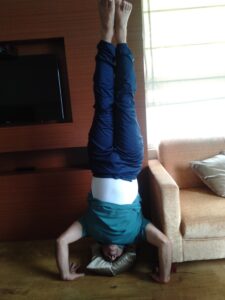
- Relieves Stress. …
- Increases Focus. …
- Improves Blood Flow To The Eyes. …
- Increases Blood Flow To The Head And Scalp. …
- Strengthens Shoulders And Arms. …
- Improves Digestion. …
- Helps To Flush Out The Adrenal Glands. …
- Decreases Fluid Build-Up In The Legs, Ankles, And Feet.
- Naukasana : Naukasana helps in regulating blood flow at sugar level and strengthens the abdominal muscles. It improves the health of all organs in the abdomen, especially the liver, pancreas and kidneys and also strengthens the muscles of the arms, thighs and shoulders
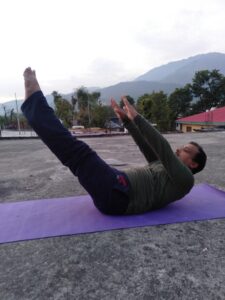
- Dhanurasana: Dhanurasanahas been named after the shape the body takes while performing it – that of a bow. Dhanumeans bow and asana means posture or pose. Just as a well-strung bow is an asset to a warrior, a well-stretched body helps keep you flexible with a good posture
- Strengthens the back and abdominal muscles
- Stimulates the reproductive organs
- Opens up the chest, neck, and shoulders
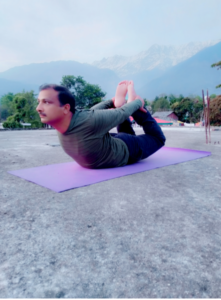
- Tones the leg and arm muscles
- Adds greater flexibility to the back
- Alleviates stress and fatigue
- Relieves menstrual discomfort and constipation
- Helps people with renal (kidney) disorders
- Halasana: Halasana stretches your spine and stretches, strengthens, and tones your back muscles. It helps prevent and relieve tightness in your neck, shoulders,
-
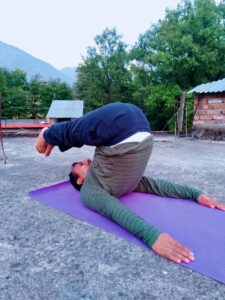 and back. The pose also strengthens your shoulders, arms, and legs. Practicing Halasana enhances flexibility, which improves muscle and joint mobility
and back. The pose also strengthens your shoulders, arms, and legs. Practicing Halasana enhances flexibility, which improves muscle and joint mobility
- Bhujangasan (Cobra Stretch)
Bhujangasana (Cobra Stretch) comes from the word bhujanga meaning cobra or snake and asana meaning pose. Bhujangasana is also known as Cobra Stretch. This pose is included in Suryanamaskar (Sun Salutations Pose) as well as Padma Sadhana. 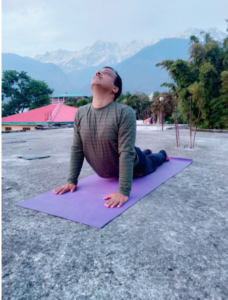
- Opens up the shoulders and neck to relieve pain
- Tones the abdomen
- Strengthens the entire back and shoulders
- Improves flexibility of the upper and middle back
- Expands the chest
- Improves blood circulation
- Reduces fatigue and stress
- Useful for people with respiratory disorders such as asthma
Chakarasna (Wheel Pose)
Wheel Pose stimulates the breath, opens the chest and shoulders, improves spinal flexibility, improves strength, and may even improve blood glucose levels and adrenal function.
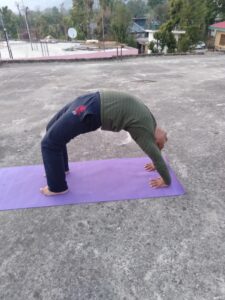
- Improves spinal flexibility. …
- Increases strength. …
- May improve blood glucose levels among people with type 2 diabetes
So the yogasana are the vedic physical practices which not only improves our body strength but also improves our mental well being hence we all should practice yogasanas on daily basis without break.
Let us do asanas and stay happy and fulfilled life.

